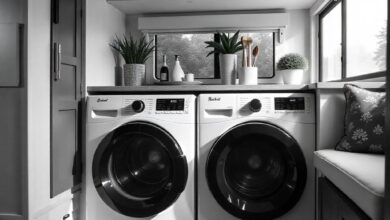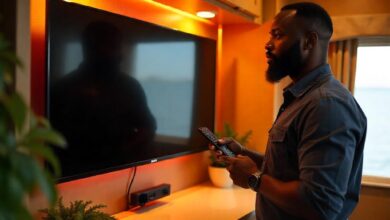External Solar Panel Hookup for RV

Table of Contents
Introduction
For RV owners, switching to solar power offers a valuable path to stay charged up without the requirement for campgrounds or obnoxious generators. Solar panels that are installed outside the RV can help in providing energy for the lights, small appliances as well as some important electronics hence making it one of the commonly added features for people with interest in off-grid travel.. In today’s focusing post, we are going to address all things solar including picking out the right equipment to install them and anything in between in order to get the most out of the power of any RV.
Why Choose External Solar Panels for RV?
Having a solar power system on an RV eliminates the necessity to look for an electric hook up all the time. That is why many RVers turn to solar power for their trips.
Advantages of Solar Power for RVs
Independence from Campground Hookups
This way, RV travelers can self-generate electricity and undertake camping activities in regions that; lack electric hookups, if these are a handful of favorites of those who love boondocking.
Cost Savings Over Time
This is because although the actual cost of having a solar panel system might be steep, it is actually helpful in cases where one may have to rely on fuel or campgrounds.
Environmental Benefits of Solar Panels
Reduced Carbon Footprint
Solar power is a type of renewable energy that means that RVers have an environmentally friendly approach to their generators.
Quiet, Clean Energy Source
While generators are noisy and always emitting smoke, solar panels are fairly silent and clean, making camping better for everyone.
Types of Solar Panel Systems for RVs
Choosing the right solar panel setup depends on your energy needs, budget, and intended use. Here are three primary types of solar panel systems for RVs.
| Type | Description | Best For |
| Portable Panels | Stand-alone panels you can place near the RV | Occasional use, flexibility |
| Roof-Mounted | Panels mounted permanently on the RV’s roof | Full-time RVers, heavy power users |
| Solar Generators | Combined battery and solar system in one unit | Backup power, small electrical needs |
Portable Panels
Portable panels are ideal for RVers who want a flexible, removable solar solution. They can be set up in different locations to maximize sunlight.
Roof-Mounted Solar Panels
Roof-mounted solar systems are best for full-time RVers or those with high energy needs, as they provide a consistent, permanent power source.
How to Choose the Right Solar Panel Setup for Your RV
Selecting the right solar panel setup involves assessing your RV’s energy needs, space, and budget.
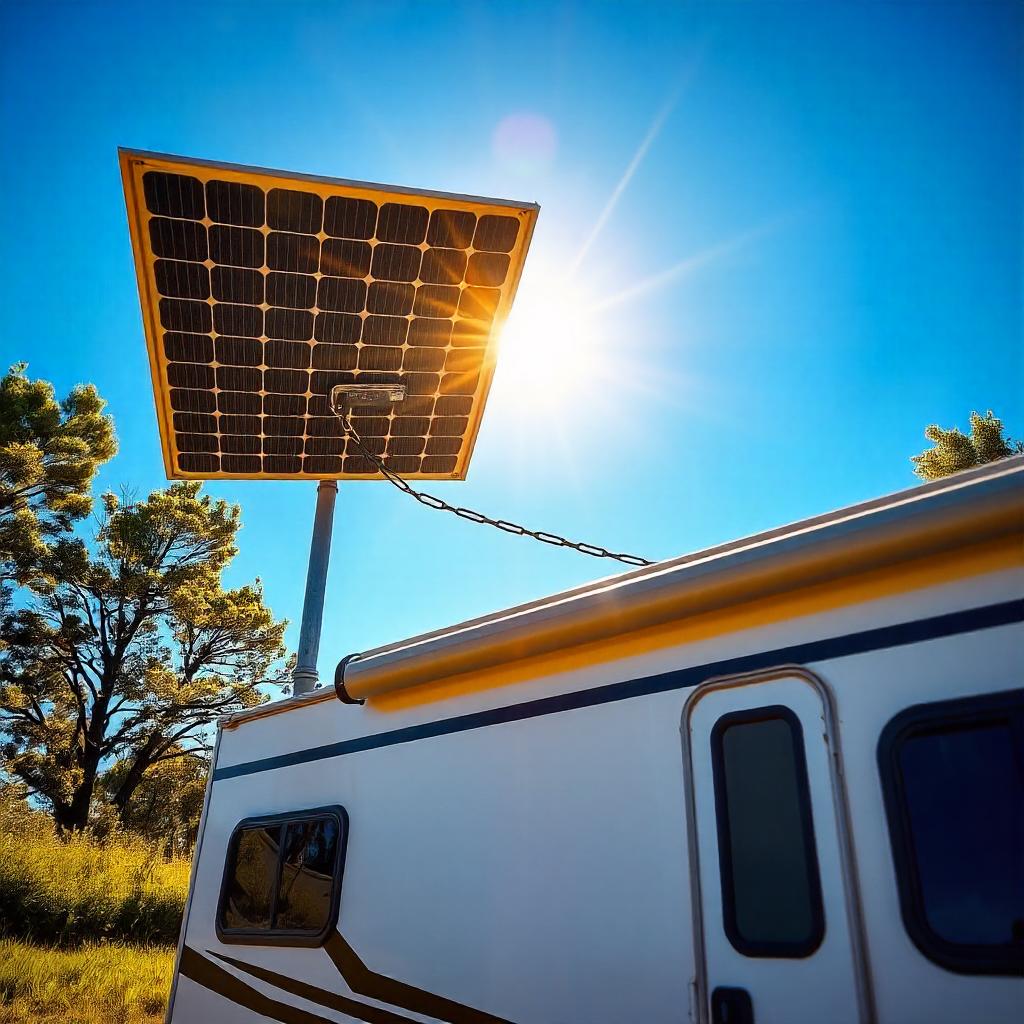
Step 1: Determine Your RV Power Needs
Estimating Daily Energy Usage
Calculate the total wattage of the devices you plan to use daily to determine how much energy you’ll need from your solar panels.
| Device | Estimated Wattage | Daily Usage (hrs) | Total Daily Energy (Wh) |
| Lights | 60 W | 5 | 300 Wh |
| Refrigerator | 150 W | 8 | 1200 Wh |
| TV | 100 W | 2 | 200 Wh |
| Phone Charger | 10 W | 4 | 40 Wh |
| Total Estimated Use | 1740 Wh |
Choosing a Solar Panel Size Based on Usage
Once you know your total daily energy needs, select panels that will generate enough wattage to cover that amount.
Step 2: Consider Available Space for Mounting
Portable vs. Roof-Mounted Panels
Portable panels can be stored away, while roof-mounted panels require enough roof space but are more convenient for full-time energy needs.
Ensuring Compatibility with Battery Bank Size
If you have a small battery bank, ensure that the panels won’t overwhelm it with excess power, leading to inefficient storage.
Step-by-Step Guide to Hooking Up External Solar Panels to Your RV
For those who’ve chosen an external or portable solar panel setup, here’s a step-by-step guide for installation.
Step 1: Gather Necessary Components
To set up an external solar panel system, you’ll need the following components:
| Component | Purpose |
| Solar Panel(s) | Captures sunlight and converts it into electricity |
| Charge Controller | Regulates power flow from panels to batteries |
| Battery Bank | Stores energy generated by the solar panels |
| Inverter | Converts DC to AC power for RV appliances |
| Cables and Connectors | Links components together |
Step 2: Connect the Charge Controller to the Battery Bank
A charge controller ensures that the solar panels don’t overcharge the battery, which can lead to battery damage.
Tips for Connecting Safely
- Attach the charge controller to the battery before connecting the solar panels.
- Follow polarity guidelines to prevent wiring issues.
Step 3: Position and Connect the Solar Panels
Optimal Placement for Sunlight Exposure
Place your solar panels in direct sunlight, ideally at a 30-45° angle, depending on the season and location.
Using Extension Cables if Necessary
If your solar panels need to be placed far from your RV, use extension cables to connect them to the charge controller.
Read Also : How to Replace RV Awning Fabric? : : How to Install RV Backflow Preventer?
Maintenance and Care Tips for
Solar panels require minimal maintenance but keeping them in good condition maximizes their efficiency and lifespan.
Cleaning and Inspecting Panels Regularly
Removing Dirt and Debris
Dirt can accumulate on solar panels, reducing their efficiency. Clean your panels every few weeks or after dusty travels.
Inspecting for Damage or Loose Connections
Regularly inspect the wiring and connectors to prevent any issues that could disrupt power flow.
Seasonal Adjustments for Optimal Sun Exposure
Adjusting Panel Angles
Depending on the season, adjust your panels for optimal sun exposure—more angled in winter and flatter in summer.
Storing Panels During Extended Breaks
If you don’t use your RV during certain seasons, consider storing portable panels to protect them from the elements.
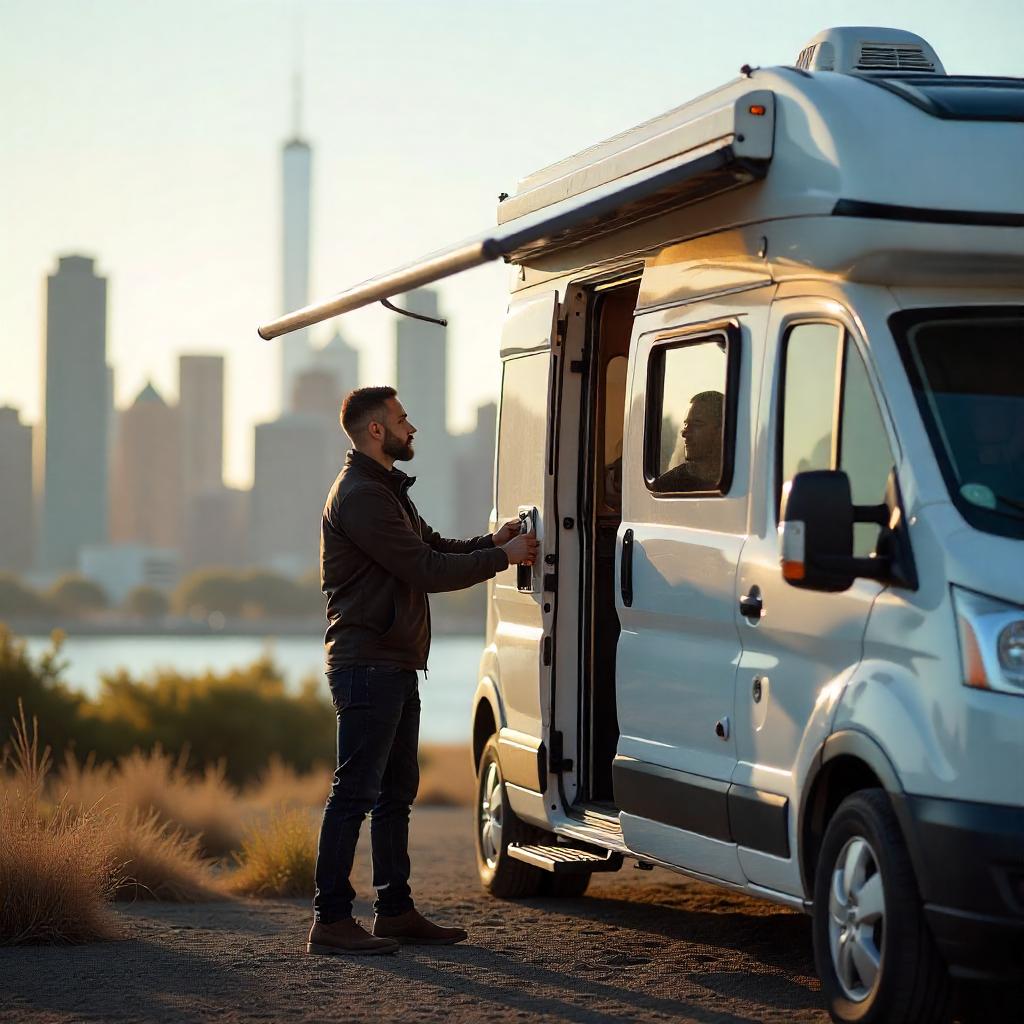
Maximizing Solar Efficiency: Tips and Tricks
Getting the most out of your solar panel setup involves a few additional strategies for efficient energy use.
Monitoring Energy Usage with a Power Meter
A power meter helps monitor how much energy your solar panels generate and how much is used, providing insight into potential improvements.
Setting Alerts for Battery Capacity
Some power meters allow you to set alerts for battery levels, preventing unexpected power outages.
Using Energy-Efficient Appliances
LED Lights and Low-Energy Appliances
Opt for energy-efficient devices like LED lights, which consume less power and extend battery life.
Limiting High-Energy Appliances
Avoid using high-energy devices like air conditioners when relying solely on solar power, as these can quickly drain the battery.
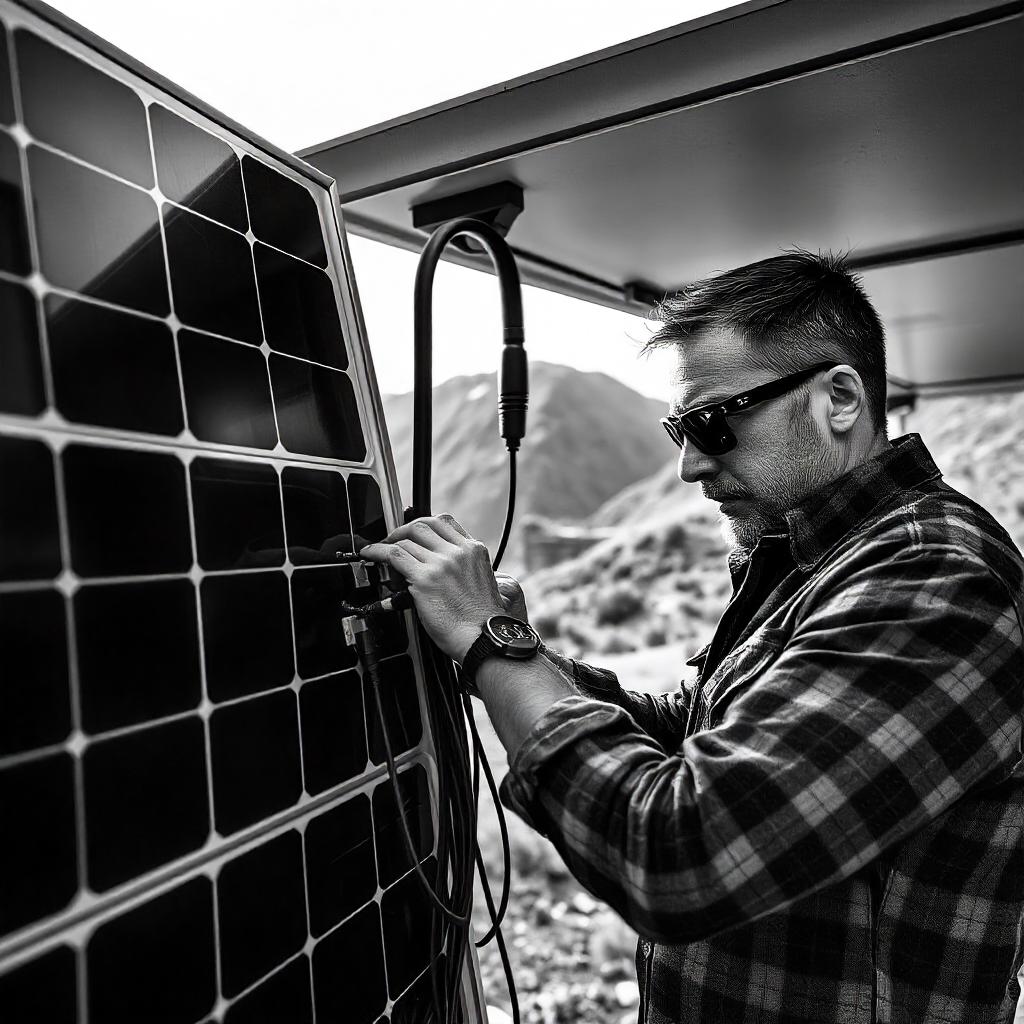
Cost Breakdown: What to Expect for an RV Solar Panel Setup
Setting up an external solar panel system requires an upfront investment. Here’s a breakdown of typical costs.
| Component | Estimated Cost | Notes |
| Solar Panels | $100–$400 per panel | Price varies based on wattage |
| Charge Controller | $20–$150 | Higher-priced models have more features |
| Battery Bank | $200–$1,500 | Lithium batteries are more expensive but longer-lasting |
| Inverter | $100–$400 | Higher wattage inverters cost more |
| Cables and Connectors | $20–$50 | Make sure connectors are compatible |
| Total Estimated Cost | $440–$2,500+ | Depending on the system size and quality |
Tips for Budget-Friendly Solar Panel Setups
- Start Small: Begin with a basic setup and add more panels or batteries as needed.
- Look for Used Components: Some RVers sell their used solar setups, which can be a great cost-saving option.
- Consider DIY Installation: If you’re comfortable with wiring, installing the system yourself can reduce setup costs.
Frequently Asked Questions About External Solar Panels for RVs
Can I Run My RV Air Conditioner on Solar Power?
There is no standard procedure that can’t be powered by solar in some manner or another, which makes it possible for you to run your RV air conditioner on solar power.
It is almost impossible to run an air conditioner on solar power alone, as it takes a lot of power. High capacity batteries and high wattage inverters will help, however, the infrastructure will not work for most RV consumers.
How Many Solar Panels Do I Need for My RV?
The number of the solar panels depends on the energy used in a house or the power rating of each solar panel. Typically, when the RV is in its standard form, about 200-400 watts of the solar power more than adequately fulfills the power requirements.
Do Solar Panels Work in Cloudy Weather?
Yes, solar panels work on cloudy days it is however important to note that the energy the panels produce will be lower. It is expectable thatStorms will reduce the operation level by 10-30% compared to the usual output depending on the cloud density.
Conclusion
Understanding the several advantages that come with having an external solar panel hookup at your RV, is simply because of torque free and green energy that it promotes besides saving on fuel. Following this guide will prepared you to choose the right system, install it properly and use it to the best effect to give you that complete off grid lifestyle. Solar power can enable RV travellers to go futher and you to be off-grid for longer – assisting you to get the absolute most out of your adventures.

